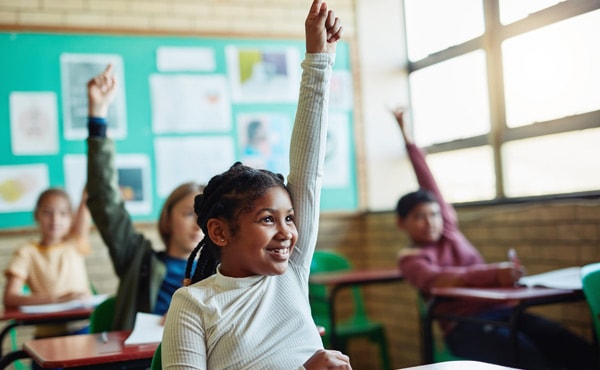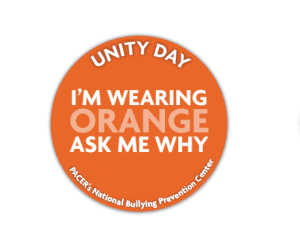One of the most important factors in a child’s school success, even more so than economic or social status, is parental or family empowerment. How involved caregivers are with a child’s education is the major factor in academic achievement.
But it can be difficult for families to be active in their child’s education if those families can’t get their basic needs met. One way to encourage family involvement in a child’s education is to give them the power to do so by using a two-generation approach.
Let’s look at what the two-generation approach to learning is and how to put it to work in your classroom.
What Is the Two-Generation Approach?
What is a two-generation approach? Its basic definition is an approach to education that takes into account not only the needs of a student, but also the needs of their family. [3]
Here are the key components of a two generation approach. It:
- Considers the needs of students and families
- Helps families help their students practice learning skills
- Connects the family with local resources to help the family meet their needs
Researchers have found that a parent or caregiver’s education, economic state, and overall health has an impact on a child’s development. But also, a child’s education and development have a positive effect on families.[6] Two-generation approaches emphasize education, economic support, and health to build economic security that can pass from one generation to the next.[8]
Two-generation approaches do this by “intentionally and simultaneously working with children and the adults in their lives together. The approach recognizes that families come in all different shapes and sizes and that families define themselves.”[9]
Why it Matters: The Effects of Poverty in Education
How well a child’s home functions has a big influence on a child’s success in school. Helping families succeed in life helps children succeed in school, which in turn leads to better chances for future generations.
Poverty can play a big role in the health of a child, which in turn can affect their academic development. Almost half of all children in America live in under-resourced families.[6] It’s not always evident which students those may be. Every family has a different story. But we can embrace common humanity by making sure all families have an equitable chance, which also helps to make sure no child gets left behind.
Substandard housing, lack of access to medical care, and poor nutrition can affect a child’s physical and cognitive development. These factors can affect a student’s ability to benefit from school.[4]
Students living in underprivileged homes often have less help than other students. Parents or guardians might work longer hours, multiple jobs, odd hours, or might not otherwise be home to help with school work. Further, logistical challenges like lack of access to the Internet or home computers can challenge students.[5]
The good news is that an investment in education for children and their parents as advocated by the two-generation approach can pay dividends to the families and to society. Investments in early childhood education yield a 7-10% return on investment per year, based on increased school, career achievement, and reduced social costs, according to the Aspen Institute. Two-generation approaches put the entire family on the path to economic security.[7]
How to Practice the Two-Generation Approach in Schools
 The two-generation approach is not new. One example of a program that uses this is Head Start.[1] We can look to them for a glimpse of a successfully run two-generation strategy.
The two-generation approach is not new. One example of a program that uses this is Head Start.[1] We can look to them for a glimpse of a successfully run two-generation strategy.
Head Start is a federally funded program that promotes wellness for children from underprivileged families, provides education, childcare, and early learning development, both in the home and at PreK or childcare centers.[2] Head Start was designed to address not only the child’s needs, but the family and the community needs as well.
It does this by supporting family well-being and financial security, by holding programs designed to support and strengthen parent-child relationships, and by engaging families in their child’s learning.[2]
In your classroom, you might not have the same resources available, but you can take steps to establish a healthy two-generation approach. This includes making sure that your students’ families are aware of food assistance programs that are available for them in the community and at school.
Next, ensure that they have resources for at-home learning. These could include:
- Extended library hours before or after school
- Loaning out WiFi hotspots and laptops to students over weekends or nights
- Providing students at higher grade levels with access to college admissions, scholarships, and financial aid information, and educating students on post-school opportunities.[6]
Teachers can also reach out to families to try to increase family empowerment. Some ideas for boosting caregiver involvement include:
- Connect with parents in person as much as possible, in addition to tech-based connections
- Connect with each family in some way at least twice a month to strengthen parent teacher relationships
- Involve parents more in decision-making processes (such as teacher goals) through community meetings with a mix of parents and faculty
If you make sure your students’ basic needs are met in the school, and that their families have the power of knowing what resources are available to them at home, you’ll be giving your students the tools they need to succeed and thrive. And the effects of that will be felt from the classroom to their homes, and to their communities.
Sources:
- Dropkin, Emmalie and Sylvia Jauregui. “Two Generations Together: Case Studies from Head Start.” NHSA.org. January 2015. https://www.nhsa.org/wp-content/uploads/2020/11/twogenerationstogetherreport.pdf
- Head Start. “Head Start Services.” HHS.gov. https://www.acf.hhs.gov/ohs/about/head-start
- National Conference of State Legislatures. “Two-Generation Strategies Toolkit.” https://www.ncsl.org/research/human-services/two-generation-strategies-toolkit.aspx
- Parett, William, and Kathleen https://www.ncsl.org/research/human-services/two-generation-strategies-toolkit.aspxBurdge.
- “How Does Poverty Influence Learning?” Edutopia.org. January 2016. https://www.edutopia.org/blog/how-does-poverty-influence-learning-william-parrett-kathleen-budge
- National Association of Secondary School Principals. “Poverty and Its Impacts on Students’ Education.” NASSP.org. https://www.nassp.org/poverty-and-its-impact-on-students-education/
- Ascend the Aspen Institute. “Two-Generation Playbook.” AspenInstitute.org. https://ascend.aspeninstitute.org/wp-content/uploads/2017/10/Playbook_Sept_2016.pdf
- Metropolitan Housing and Communities Policy Center. “Two-Generation Approach.” Urban.org. https://www.urban.org/policy-centers/metropolitan-housing-and-communities-policy-center/projects/host-initiative-action/designing-housing-platform-services/two-generation-approach
- Ascend the Aspen Institute. “What is 2-Gen” AspenInstitute.org. https://ascend.aspeninstitute.org/two-generation/what-is-2gen/





